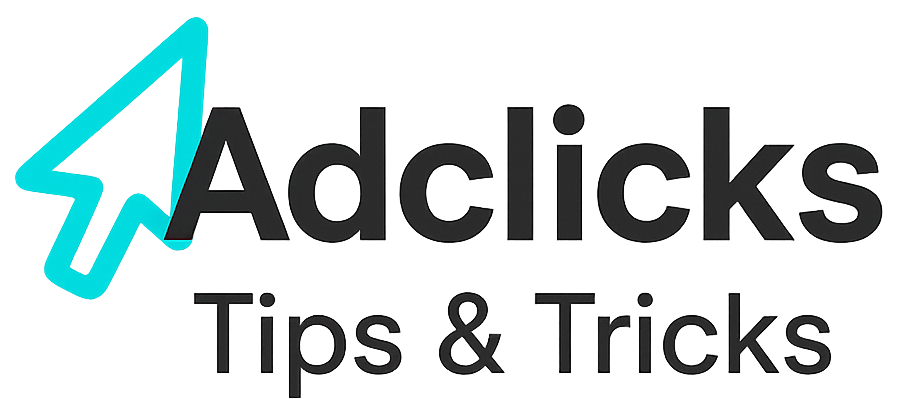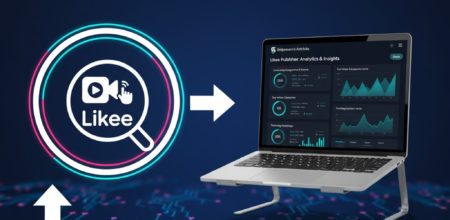Foursquare began as a check-in / location discovery app in 2009, letting users see and share the places they visit. Over time it transitioned into a location data / geospatial platform (Places API, Venue database, location attribution) and less of a “social feed” in the consumer mindset.
The core value Foursquare now offers is place metadata, venue discovery, map embedding, and location-based audience intelligence. Through APIs, apps and websites can query Foursquare’s Places database to get names, addresses, categories, website URLs, photos, tips, ratings, and more.
Foursquare also offers Advertiser / Data products:
- “Foursquare Audience” — build segments based on real-world visitation and geographic behavior for targeting.
- “Foursquare Attribution / Sales Impact” — tools to measure how digital campaigns drive in-person visits and sales.
Thus, Foursquare is a hybrid of local discovery and location-data infrastructure. As a publisher, you can tap into both: use venue pages and metadata linking, and leverage the location audience for targeting and traffic.
Foursquare is not a pure social media feed, but a contextual, place-based platform whose strength is linking physical places and location intent with digital content and discovery.
Audience, Traffic, and User Behavior
To understand how Foursquare can channel users to your site, we need to look at who uses it, how much traffic it gets, and what their motivations are.
Usage / Traffic Numbers
Foursquare’s consumer side still retains meaningful usage: many users use it to search for “places near me,” get recommendations, and find local businesses.
But on the web domain side, traffic is more limited. According to Ahrefs data (July 2025), foursquare.com had about 539,000 search visits that month, with Turkey as a dominant traffic source (≈ 322K visits, ~59.7% of that traffic) and the U.S. contributing ~130K visits (24.1%) Ahrefs.
In terms of global usage, one source says Foursquare had ~55 million monthly active users and ~3 billion monthly visits across its app and related services. 99Firms stat roundup claims ~60 million registered users and over 50 million monthly actives.
These figures suggest that its consumer footprint remains nontrivial, especially in local discovery segments.
Demographics, Interests & Behavior
From available data:
- In the U.S., men slightly outnumber women on Foursquare (~58% male, 42% female) in some studies.
- Age brackets skew toward adults in their 20s–40s. One source says 40% of U.S. users are aged 30–39, and a large proportion are 25–34.
- Many users have location and discovery motives — e.g. searching for restaurants, shopping, entertainment nearby. Foursquare is used as a local guide / map / place finder.
- Because Foursquare tracks visitation and location data, it builds audience profiles around real-world movement, not just clicks. Their “Audience” product explicitly transforms location behaviour into targeting segments.
Thus the Foursquare audience is local-intent, place-focused, mobile-driven. These are people actively looking for businesses, venues, or things to do in their area.
Where and How You Can Place Hyperlinks on Foursquare
For a publisher, you need to understand where within Foursquare’s venue and map ecosystem you can insert outbound hyperlinks (i.e. link to your website or content). Here are the key places:
Venue / Business Listings — “Website” Field
When a business or place is added to Foursquare, there is often a Website URL or “link” field in the venue metadata. That URL is displayed on the public listing, letting users tap “Visit Website” to go out to that business’s site. This is a primary hyperlink opportunity.
If you (or a partner) claim a venue or manage it, you can ensure that field is populated with your desired link (e.g. to a content page, review, or event). This is one direct path for traffic.
Tips / User Reviews / Comments
Users can leave tips or reviews on venue pages (UGC). In these tips, users sometimes include URLs, though platforms often sanitize or limit linking.
If you engage in tip writing or reviews (as your brand or contributors), you might include references to your content (sparingly) relevant to the venue (e.g. a local event or guide). This has to be done tastefully to avoid spam perception.
Embedded Maps / Publish Maps
Foursquare offers a “Publish Map” feature in their enterprise / studio environment (maps users can embed). These published maps can include minimal branding and may embed links. For instance, a location-based content site could embed a Foursquare-powered map of recommended venues, each with clickable markers that link to your content. That embed is a hyperlink interface.
API / Places Data in External Apps & Sites
Many publishers and apps use the Foursquare Places API to fetch venue info (including website links, photos, tips). If your site or app integrates Foursquare Places, you can show venue listings with user reviews and then hyperlink those venue names / “Visit website” buttons to either Foursquare or your own deeper content pages (e.g. “Full guide to best cafés in Prague”).
This is less about placing a hyperlink within Foursquare itself, and more about using Foursquare data as a springboard to your site.
Advertisements / Promoted Venue Cards
Foursquare’s business/ad products allow you to promote your venue or content in local discovery listings. These promoted venue cards typically include an action button (like “Visit Website” or “Learn More”), which is a hyperlink to your site. This is a paid path, but legitimate.
Attribution / Offline Linkage (Indirect)
While not a direct hyperlink, Foursquare’s Attribution / Sales Impact tools allow you to connect ad impressions to real-world visits and purchases. In using those tools, you may drive users by using digital ads linked to your content, then measure which geographies or venues convert. Using these metrics, you might then push content targeting powerful areas. The link is indirect but strategic.
Publisher Fit: What Kinds of Sites Can Benefit
Not every content website will gain from Foursquare ; the best fits have certain traits.
Local / Geo-Focused Content
Sites that cover local guides, city reviews, travel, food & dining, nightlife, events, tourism, local services, maps, and venue directories are top candidates. Because Foursquare is place-centric, your topics dovetail naturally with its use case.
For example, a “best restaurants in Prague” guide can list each restaurant, link to its Foursquare page, and also ensure your article has good SEO. Users who find restaurants via Foursquare might click from the venue to your guide. Once on your page, you can monetize via Adclicks or other ads or affiliate arrangements.
Event & Experience Reviews
If you run a platform reviewing concerts, galleries, local festivals, or immersive experiences, using Foursquare’s venue listings (maps, metadata) helps users discover your event write-ups. You might link from Foursquare’s venue page (if you can claim or manage it) or ensure your event guides appear when people search that venue.
Directory / Marketplace Hybrids
If your site is a directory or marketplace (e.g. listing coworking spaces, boutique shops, tours), integrating with Foursquare offers a data advantage (venue metadata, maps). You can add extra content beyond what Foursquare shows, and funnel users from Foursquare listings or map embeds to your detailed pages (monetized via Adclicks or membership).
Travel & Local Journalism
A travel magazine or local news site can embed maps of local interest points, use Foursquare data to enrich content (venue photos, tips), and provide deeper narratives. Readers who discover a venue via Foursquare might click into your article with background, history, or insider tips. That’s valuable traffic.
Food & Beverage / Hospitality
If you run a blog or review site for cafes, restaurants, bars, hotels, then Foursquare ’s large venue database is directly relevant. Ensure your favourite venues have proper metadata and your venue reviews are visible. Encourage venues to link your content in their “Website” fields or posts. Then align ads (via Adclicks ) on your site to hospitality, travel, local goods — a natural fit.
Tactics: Driving People from Foursquare to Your Site
Here’s how you can engineer a funnel from Foursquare’s venue-based discovery to your publisher properties.
1. Claim & Optimize Venue Listings
If you can claim or become a manager of a venue in Foursquare (e.g. a restaurant or local business), ensure the Website URL field points to your content (or a landing page). For instance, a venue might point not to its homepage but to a detailed article or guide on your site that reviews that venue. This ensures every person clicking “Visit Website” from Foursquare lands on your content first.
2. Write Useful Tips / Feature Content in Venue Pages
On venue pages, leave high-quality, useful tips (short commentary) that reference your content. For example: “Try their special rooftop seating on Fridays — full review and photos here: [your website link].” Use this sparingly and in value contexts so it’s welcome, not spam. Some users use tips to connect venue to relevant articles or guides.
3. Embed Foursquare Maps on Your Site with Venue Links
Use Foursquare’s Publish Maps or embed venue maps/data in articles (local guides). Each venue marker can link to your own detailed review or content page. This encourages users who love maps or visual layout to click into your deeper pages rather than external venues. The embed serves as both UI and hyperlink layer.
4. Integrate Foursquare Places API in Your Navigation
If your site supports location-based content, integrate Foursquare’s Places API so users browsing by city or category see Foursquare venue metadata and then click into your fuller content pages. You’re giving them both the local discovery tool and your deeper value. Every venue name or “Details” link can lead into your own content.
5. Promote Your Site via Foursquare Ads & Attribution
Use Foursquare’s ad or promotion products (e.g. promoted venue cards) to spotlight venues or events connected to your content, with a “Learn More / Visit Website” button linking to your site. Use Foursquare Attribution & Sales Impact to measure which geographies or venue ads yield visits and conversions. You can then focus your content promotion or SEO in those high-yield areas.
6. Local Content Tie-ins to Venue Searches
Create content specifically to match what people search on Foursquare. For example, if many people search “best vegan café in [city]”, publish an article or guide with that title, optimize SEO, and ensure your content shows up when users leave Foursquare. Then, when someone checks the venue, your guide may appear in web results or links.
7. Cross-Promote Venue Content on Social Channels
When you publish a guide or review, on your social channels share “check this venue on Foursquare to see photos, tips, and maps” with a link. Some users will visit the Foursquare page first, then click to your deep content. This creates multi-step funnels.
8. Monitor Analytics & Funnel Performance
Use web analytics to track retargeted traffic from Foursquare. Identify which venue links, tips, or embedded maps generated the most outward clicks to your site. Also track Adclicks revenue from those sessions to see where the funnel is most profitable. Use that feedback to refine which venues or city guides to optimize.
9. Partner with Local Venues
Collaborate with local businesses and venues to co-publish or cross-link your content. Offer them to embed your review or guide in their Foursquare listing (if they manage it), in their website, or share your article links in their tip field. That directs their foot traffic and patrons toward your content.
10. Local SEO + Venue Optimization
Ensure your content ranks well for venue-based searches (“[venue name] review”, “things to do near [location]”). When users search for that venue, your article should appear in SERPs. Combined with Foursquare discovery, this increases the chances they’ll click through from map/venue to your article, then stay and engage (and generate Adclicks earnings).
Limitations & Caveats
While Foursquare offers valuable linking and location-based discovery, realize some constraints:
- Venue “Website URL” control is often held by business owners, not you. You may need partnerships or permission to alter it.
- Tips reviews may not always support clickable links or may be truncated/sanitized.
- Some users use Foursquare or Swarm primarily for check-ins and casual discovery, not deep content reading.
- The traffic volume from Foursquare direct referrals is likely modest compared to main social networks — the key is targeting highly intent-driven local users.
- Your embed maps or APIs may require permissions or paid license for heavy usage.
Relevant Links
- Support: https://support.snipesearch.co.uk/
- FAQ: https://adclick.snipesearch.co.uk/index.php?page=index/faq
- Contact Form: https://adclick.snipesearch.co.uk/index.php?page=user/support
Stay Connected
- Snipesocial: https://www.snipesocial.co.uk/pages/snipesearch
- Twitter: https://twitter.com/snipesearch_uk
- Facebook: https://facebook.com/snipesearch
- LinkedIn: https://linkedin.com/company/snipesearch/
- VK: https://vk.com/snipesearch_uk
- Focus: https://focus.xyz/snipesearch
- YouTube: https://youtube.com/@snipesearch
- diaspora: https://diaspora.snipesearch.net/people/7431fcf0806c013e936e00163c6e7bdf
Analytic Tools
StatCounter: https://statcounter.com/
Rommie Visitor Analytics: https://rommie.net/




